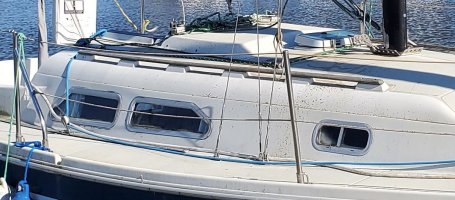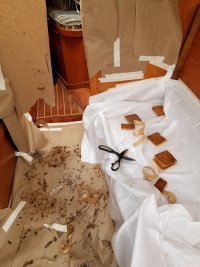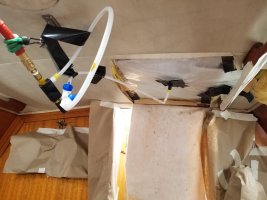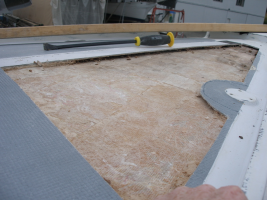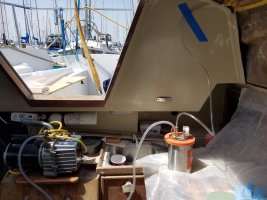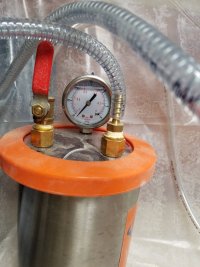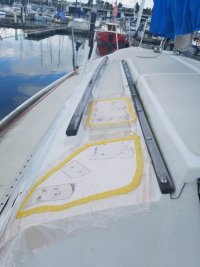So far I have done the port side coach roof on Silver Maiden. I have also done the starboard side coach roof to within a few inches of the grab rails. Project for this spring is to remove the starboard grab rails and inject through their holes like I did on the port side. I got caught with cold weather last fall.
I have used a little over 1/2 of the large boat kit. I still need to finish the starboard coachroof then move on to the port and starboard decks next to the cabin and the foredeck. The last will be the cabin sole which is getting springy in places.
Where I have done it it is rock solid like the day it was done even though I have not yet plugged the injection holes with epoxy. I figured I would do them all at the same time, especially since I got into cold weather last fall.
I would recommend this over cutting the deck off and mucking out the balsa for replacement. Be careful not to over inject or under inject. Over injection will waste product with big muffin tops out your holes and under injection will leave voids that will require another hole to be drilled.
If you get it on your decks expect a yellow stain if you do not get it removed fast with either acetone or mineral spirits, I do not recall which. This is why having a helper is good.
For my part I could care less about stains. Silver Maiden is not pretty and needs a paint job having had her gelcoat sand blasted by hurricane Sandy some years ago. Once the deck repairs are done I do plan to paint her and will be asking advice here.
When I spoke to the injectadeck guy for my boat and the amount of area I had to cover he suggested the big boat kit and said if then I needed just 1 or two more tubes to finish he would sell me individual tubes until I was finished. I expect I will be getting more from him when I am done.
Sadly I have had no time to complete the project as I am at the moment working 6 days a week as Captain of a private ferry in NY harbor. That is also why I have not been active on the forum.
I have used a little over 1/2 of the large boat kit. I still need to finish the starboard coachroof then move on to the port and starboard decks next to the cabin and the foredeck. The last will be the cabin sole which is getting springy in places.
Where I have done it it is rock solid like the day it was done even though I have not yet plugged the injection holes with epoxy. I figured I would do them all at the same time, especially since I got into cold weather last fall.
I would recommend this over cutting the deck off and mucking out the balsa for replacement. Be careful not to over inject or under inject. Over injection will waste product with big muffin tops out your holes and under injection will leave voids that will require another hole to be drilled.
If you get it on your decks expect a yellow stain if you do not get it removed fast with either acetone or mineral spirits, I do not recall which. This is why having a helper is good.
For my part I could care less about stains. Silver Maiden is not pretty and needs a paint job having had her gelcoat sand blasted by hurricane Sandy some years ago. Once the deck repairs are done I do plan to paint her and will be asking advice here.
When I spoke to the injectadeck guy for my boat and the amount of area I had to cover he suggested the big boat kit and said if then I needed just 1 or two more tubes to finish he would sell me individual tubes until I was finished. I expect I will be getting more from him when I am done.
Sadly I have had no time to complete the project as I am at the moment working 6 days a week as Captain of a private ferry in NY harbor. That is also why I have not been active on the forum.

